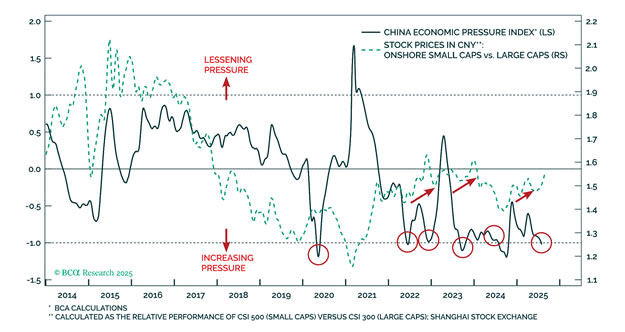The four-year crypto cycle is no longer a reliable timing rule for Bitcoin; Arthur Hayes says Bitcoin cycles are driven primarily by monetary policy — USD and Chinese yuan liquidity — not halving timetables. Current US and Chinese easing make this cycle structurally different and potentially longer-lived.
-
Monetary policy, not halvings, now drives Bitcoin cycles.
-
US liquidity expansion and Chinese policy shifts reduce the chance of a cycle-ending deflationary shock.
-
Market odds and Fed moves (CME futures pricing) point to further rate cuts this year, supporting risk assets including Bitcoin.
four-year crypto cycle analysis: Bitcoin cycles now follow monetary policy flows—learn why easing in the US and China may extend the rally. Read on for data and key takeaways.
BitMEX co-founder Arthur Hayes says Bitcoin cycles are shaped by USD and yuan liquidity rather than rigid four-year timing, and that current US and Chinese policy moves make this cycle materially different.
Is the four-year crypto cycle dead?
The four-year crypto cycle as a strict timing rule is no longer reliable. Arthur Hayes argues Bitcoin cycles respond to changes in the money supply — especially US dollar and Chinese yuan liquidity — and that current policy easing makes this phase distinct from prior cycles.
How does monetary policy drive Bitcoin cycles?
Bitcoin’s major rallies historically coincided with periods of ample liquidity. Short-term spikes often follow central-bank easing, mortgage and bank liquidity flows, or Chinese credit expansion. Conversely, past cycle endings aligned with global tightening and reduced credit growth.
What makes the current cycle different?
Hayes highlights several structural differences this cycle:
-
Large Treasury operations: The US Treasury has moved liquidity via Reverse Repo reductions and Treasury bill issuance, shifting cash into markets.
-
US monetary easing signals: Fed rate cuts are being priced in by futures markets, increasing expected USD liquidity.
-
Chinese policy pivot: Beijing appears focused on ending deflation and preventing credit contraction, which limits the deflationary headwind that stopped prior rallies.
-
Regulatory and lending changes: Deregulation and policies to boost bank lending can further amplify liquidity.
What do market signals indicate now?
Futures markets price high odds of additional Fed cuts later this year. Those expectations imply easier dollar conditions and greater risk appetite. Hayes notes that if both US and Chinese policy tilt neutral-to-easing, there is less force to terminate a Bitcoin rally via simultaneous liquidity withdrawal.
How have previous cycles differed by driver?
| Cycle | Primary driver | Why it ended |
|---|---|---|
| 2011–2013 | US QE + Chinese credit expansion | Fed & Chinese slowdown of money printing |
| 2015 (ICO cycle) | Yuan credit explosion | Chinese credit deceleration and tighter dollar conditions |
| 2020–2021 (COVID-era) | USD liquidity surge | Fed tightening from late 2021 |

Why won’t China kill the cycle this time?
Hayes argues China is moving away from aggressive liquidity withdrawal. Policymakers appear prepared to combat deflation and support domestic credit. That reduces the odds that Chinese policy will act as the counterweight that ended past Bitcoin rallies.
What do other market participants say?
On-chain analytics firm Glassnode has noted that some cyclical patterns still appear. Saad Ahmed, Gemini’s head of APAC region, told Cointelegraph that many market participants expect some form of recurring cycle to persist. These views indicate the debate remains open, but monetary flows now receive heavier emphasis.
Frequently Asked Questions
How long could this Bitcoin rally last given current policy?
There is no fixed timeline. If US and Chinese liquidity remain supportive, the rally could extend beyond historical four-year bounds; if either region tightens drastically, the cycle could still end. Watch central-bank actions and credit indicators closely.
Does a halving no longer matter for Bitcoin price?
Halvings remain supply-side events, but Hayes argues their price impact is conditioned by liquidity. A halving in an easing environment may have a different effect than one that coincides with global tightening.
How should investors track these signals?
Monitor Fed communications, futures-implied rates, Chinese credit growth data, and bank lending trends. Combine macro indicators with on-chain metrics to form a layered view of cycle risk.
Key Takeaways
- Monetary policy matters most: Bitcoin cycles historically align with USD and yuan liquidity shifts.
- Four-year timing is unreliable: Fixed halving schedules do not guarantee cycle endpoints without considering macro liquidity.
- Monitor policy and credit: Fed rate projections, Chinese credit trends, and Treasury operations are key indicators for cycle outlook.
Conclusion
Arthur Hayes’ assessment reframes the debate: the four-year crypto cycle is not dead because of a unique market quirk, but because macro liquidity now dominates cycle dynamics. Investors should prioritize monetary-policy signals from the US and China and use short, data-driven checks to gauge whether this cycle sustains or reverses.






